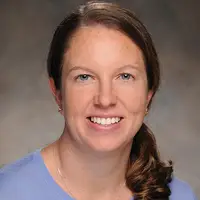Following the post-graduation experience of bachelor’s degree recipients from American colleges and universities
In the years after they receive their bachelor’s degrees, college graduates set a course for their futures. They launch careers, start families, manage finances, and make many other changes and decisions.
The busy, change-filled years immediately after college are the subject of the Baccalaureate and Beyond Longitudinal Study, known as B&B.
Since the early 1990s, B&B has served as a valuable resource for researchers and government leaders on the education and career experiences of graduates in the first 10 years after receiving their bachelor’s degrees. RTI has been involved with B&B since the early 2000s.
In addition to tracking broad trends among recent college graduates, B&B includes a special focus on the continuing education paths of science, technology, engineering, and mathematics (STEM) graduates, and the experiences of those who have worked as a K-12 teacher. Critical to understanding the teacher pipeline and America’s international competitiveness, these target populations deserve extra attention.
Life After College, Measured Over Time
Our roots with B&B stretch back through our decades-long partnership with the U.S. Department of Education’s National Center for Education Statistics. Since 1996, we have conducted the National Postsecondary Student Aid Study (NPSAS). This comprehensive study of college financing forms the basis for B&B, the Beginning Postsecondary Students Longitudinal Study (BPS), and other studies by helping us identify a cohort of graduates to follow. Typically, each cohort of graduates is surveyed at one year, four years, and 10 years after graduation.
B&B has expanded greatly over the years. In early administrations, B&B’s sample size was about 10,000, a number that will grow to approximately 28,000 with the cohort of 2016-17 graduates.
Over the years, we have enhanced and updated our survey methods to ensure accuracy while keeping up with a changing population and evolving technology. We began offering a web-based survey in 2003, and have since optimized it for mobile devices. As the target population shifted away from land-line phones, we added text messages and email to our methods of staying in touch with respondents. We have also incorporated transcript studies, which help us reconcile and supplement information gathered from students with official records from colleges.
At the same time, the data we collect have become more comprehensive, particularly regarding employment. We collect a complete employment history, including the time spent at each job, and are exploring the feasibility of using respondents’ resumes as a source for this data in order to streamline the survey. To gain even more detail, we are exploring ways to collect and interpret resumes. We stay tuned into changes in the education landscape, noting shifts in student characteristics, institutions, and higher education policy, so that we can adequately monitor the most relevant post-college outcomes.
A Key Resource for National Education Policy Discussions
Taken as a whole, NPSAS, B&B, and BPS provide a comprehensive picture of postsecondary education in the United States. The research and policy communities have a vital interest in accurate data on how graduates fare after college, in terms of employment, additional education, and student debt and repayment. B&B provides these data and has helped inform decisions on education and financial aid policy at both the Department of Education and the White House.
Some notable findings from recent B&B studies include:
- Most graduates borrowed to pay for college. Among 2007-08 graduates who had no enrollment after earning the bachelor’s degree, about 66 percent borrowed. Including students who had postbaccalaureate enrollment, about 72 percent had borrowed for any education through 2012.
- Student loan repayment takes several years. As of 2012, about 17 percent of borrowers with no additional enrollment had paid off their loans. Most still had loan debt 4 years after graduation.
- People with bachelor’s degrees are generally able to make their loan payments. Those who graduated in 2007-08 and had no additional enrollment borrowed an average of $24,000, and the monthly payments amounted to about 10 percent of their salaries.
- Many recent graduates return to school. Among those who graduated in 2007-08—when unemployment was high—about 43 percent had enrolled in either a graduate degree program or another undergraduate degree or certificate program at some point in the 4 years after earning their bachelor’s degree. Another 13 percent had enrolled in non-degree coursework.
- Four years after graduation, 83 percent of graduates who were not enrolled were employed. Of those, about 85 percent worked in one full-time job, 8 percent worked in one part-time job, and 8 percent had multiple jobs.
B&B is a trusted source of data and provides leaders in education and government with useful insights on how graduates carry over their college experience into life beyond college. By tracking the way graduates with different majors and educational experiences adjust their plans over time, we can better understand how colleges serve the needs of both their students and the labor market. Further, findings on student loan repayment tie into discussions of federal financial aid, personal finance, and the broader economy.
- U.S. Department of Education
- National Center for Education Statistics


